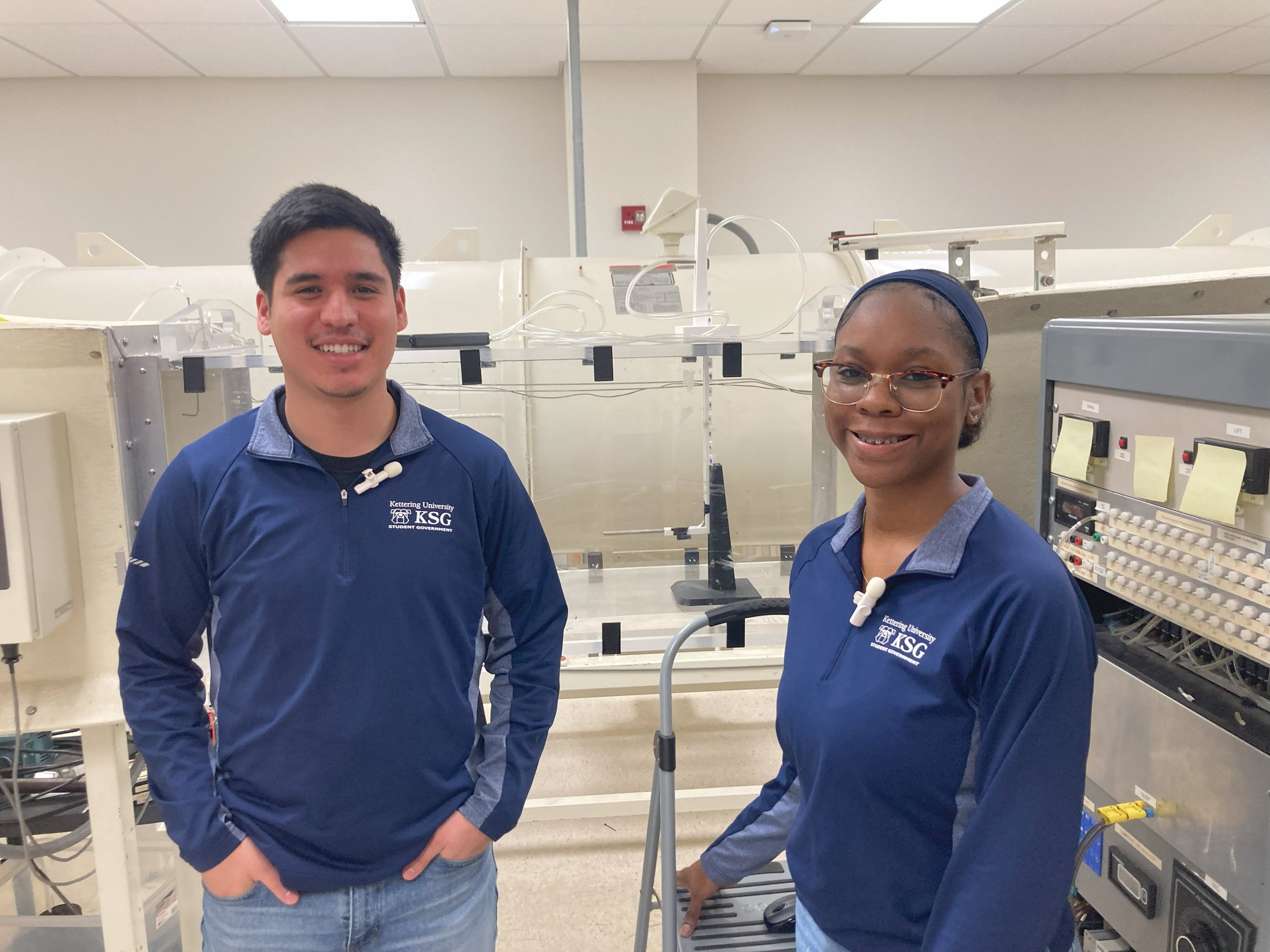
Optimization of Energy Systems Lab Wind Tunnel
Kenteya Stubbs and Felipe Villalobos
-
Personal interest for this learning experience came from the group’s general learning from the Fluid Flow Lab conducted earlier in the term. In that lab, a couple sources of error were identified as possible points of growth for future classes. These sources included human, equipment, and machine error. When conducting the lab, group members were instructed to hold the pitot tube normal to the flow inside the testing area. This allowed for the possibility of groups to test at variable depths with different pitot tube angles, depending on who was in charge of the pitot tube. When taking pressure measurements, difficulty and possibility for error arose when trying to record an accurate reading using the analog manometer. The fluid inside the manometer was constantly fluctuating, and the group constantly found itself having to switch over to the low-pressure port. When looking at the wind tunnel as a whole, a couple opportunities for error were encountered as well. The location at which the pitot tube was introduced to the wind tunnel test area, a 1” hole in the plexiglass, served as a static pressure tap which allowed for entrance of atmospheric pressure to the environment. Secondly, an insufficient warm-up time of the wind tunnel before and between data collection did not allow for steady operating conditions. When taking all of these possible points of error into account, a solution for addressing them may significantly improve the results of the Fluid Flow Lab.
-
The main objective of this personal learning experience was to remove as many contributors of error as possible involved in the data collection process at the Wind Tunnel in the Energy Systems Laboratory. When executed properly, an overall increase in the accuracy of the results is expected. Experimental variables considered in the experiment were vertical depth inside the wind tunnel test area, wind tunnel fan speed, and wind tunnel air temperature. Following data collection and analysis, it was determined that data was accurately representative of the velocity profile in a duct and a conservation of energy along a streamline, per Bernoulli’s Principle. A couple points for continuous improvement of the experimental design were also recommended, based on experiences from this experiment.
-
Click here to read the Report.
Click here to view the Presentation.
Part 1 Part 2 Part 3 Part 4 Part 5
